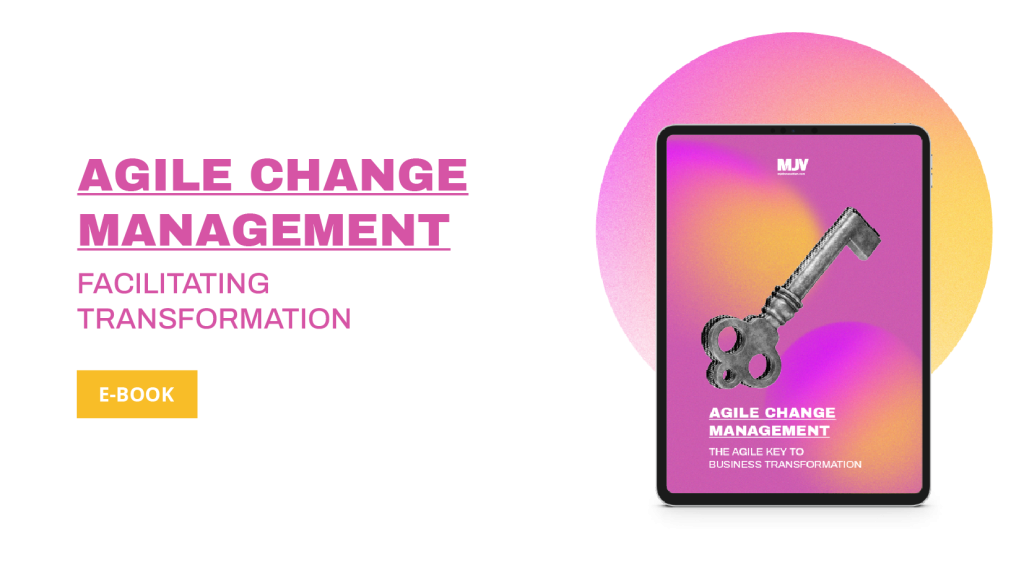7 Mistakes Managers Still Make Regarding Agile Methodologies—And How To Solve Them
Agile has aged well, but many people continue to make mistakes in adoption and management. Read on and discover 7 mistakes you should avoid!
Over the last few years, agile methods have proven their effectiveness and become top of the class in management methodologies in terms of unpredictability. In other words, low-hanging frameworks that are more productive, adaptable, flexible, and with greater potential for value generation fell from the Agile tree into project management.
Every new company born today does so under the precepts of agile methods. It’s no longer a question of whether companies will adopt it – but which frameworks are the best fit.
However, there are still some doubts and misconceptions regarding the management of agile methods that still confuse teams and managers. In this article, we’ll talk about the seven most common mistakes – as well as how to avoid and overcome them.
Agile Is Evolving – And So Should You
Agile has been around since 2001, which means the methodology is legally old enough to drink (makes you feel old, doesn’t it?). Even with it being over 21 years old, implementing Agile Methodologies has only really taken off relatively recently.
That means that while Agile might be taking place in countless organizations, there are still several pitfalls and mistakes that teams regularly make when implementing the methodology.
In this article, we’ll cover seven of the most common and project-destroying mistakes that could be happening in your organization but that are definitely ones you should be avoiding. We’ll also provide you with suggestions on how to correct them.
Without further ado, here are…
Seven Common Mistakes in Adopting Agile Methodologies
1. Starting too fast without proper training
Even though Agile Methodologies are known for providing fast results, change in the corporate model takes time. It needs to be done with great care and responsibility, because Agile is all about cultural transformation.
Keep in mind: Implementing agile methodologies is not something that should be done overnight. There are no shortcuts. Training and incremental application are key.

So before implementing Agile methodologies into your team’s workflow, it’s important to ensure that everyone has proper training. It’s not like using a new program to organize workflow, Agile is an all-encompassing methodology that will significantly change team dynamics.
For a change to be successful, there are certain processes that cannot be ignored.
2. Not hiring a full-time Scrum Master
When teams that are new to Agile begin their transition, the title of “Scrum Master” can seem silly or unnecessary, but that couldn’t be further from the truth. It’s not something that can be learned overnight and it isn’t a role to take lightly.

If you’re planning on implementing Agile into your team, make sure that the team manager has taken the time to become Scrum Master certified or hire a full-time Scrum Master to join the team.
Without a Scrum Master, your team will miss out on crucial business agility benefits like flexibility, adaptability, short feedback loops, and employee engagement. Keep in mind that a Scrum Master isn’t a project manager, and the two roles are not interchangeable.
3. Not implementing Agile top-down
If your business is thinking of implementing Agile within the entire organization, then that’s a great way to ensure proper adaptation of the methodology. If your team is thinking of implementing Agile on its own, you might experience some very serious issues.
Agile isn’t a simple project management tool that you can use within your team like Trello or Miro, it’s a way of working that takes into account the assumption that other teams in other departments are also running on Agile.

Trying to push for Agile within your company is a great idea, but trying to implement it without the A-OK from higher-ups is just going to lead to frustration when having to deal with other departments.
If Agile seems like it’s right for you, go through the proper channels, and make sure that every important stakeholder is on the same page about its implementation.
4. Not keeping up with Agile ceremonies

We cannot state just how important it is to get your team used to running Agile ceremonies, which might seem tedious but are completely essential for Agile to take root.
Let’s detail some Agile ceremonies so you can understand how they work and why they’re necessary.
• Daily meeting: team alignment
This ceremony makes transparency possible. This is where your entire team meets up to discuss what they’re doing, at what point the project is at, and any issues/bottlenecks/difficulties they happen to be experiencing.
• Review: the validation of deliveries
This is where the team delivers everything that was executed during the sprint to the Product Owner. Bringing sponsors to this meeting is a great idea. It generates a lot of team commitment to the project by empowering them. Here is where you’ll share your experiences and lessons learned throughout the project, as well as provide insight for future error management and adjustments.
• Retrospective: a meeting on what went wrong and what can be improved.
Each Scrum Master is responsible for motivating their team – regardless of results and performance rate. Herein lies the secret to continuous improvement. This ceremony guarantees that projects are on the right track the second they leave the station. Here you’ll discard what hasn’t been working for you and engrave what has been into your SOP.
5. Micromanaging over delegation
Agile is all about helping teams gain delivery speed through organization, flexibility, and self-sufficiency. But, a common problem that a lot of teams face is leadership that has a hard time letting go of old habits.
Agile teams are meant to be able to complete their tasks within deadlines they set themselves and through self-generated checks and balances. Projects are broken up into bite-sized chunks, and sprints are designed to provide feedback on deliveries quickly and often.

Micromanaging your Agile teams breaks that cycle and makes it much more difficult to get proper workflow running smoothly. It’s critical that management understands this, allow teams to self-manage, and save time for more strategic actions and macro-level decisions.
6. Testing infrequently and haphazardly

One of the most important aspects of Agile is its ability to test quickly and iterate for success. Not being afraid to fail and embracing failure is all well and good, but it provides no real benefit to the finished product if testing isn’t conducted regularly and strategically.
Teams need to plan a testing schedule with regular feedback in order to understand where the project is headed and how to course correct. This is precisely the reason why Agile teams need to have a Scrum Master.
Every sprint should end with a well-conducted feedback session as well as a thorough testing phase. Agile might provide teams with speed, but if you’re not slowing down in the corners and conducting regular pit stops, your team’s car is almost certainly going to crash or break down.
7. Lack of customer feedback
Traditional waterfall methods are not strangers to end-user feedback, but the difference between them and the Agile methodology is when and how often this feedback is collected.
Instead of placing feedback at the very end of development, Agile focuses on short sprints that all incur a feedback loop.

Getting feedback internally from your team is a must, but when the project involves software development or product design, it’s equally as important to collect customer feedback. Just like testing, customer feedback sessions should be conducted regularly and methodically in order to get adherent insights to help your team iterate properly and effectively.
Bonus: The Spotify Model
Spotify actually has a model for scaling Agile implementation within their company. The model is a people-driven, autonomous approach that emphasizes the importance of culture and top-down dissemination. It’s helped Spotify and other organizations increase Agile integration and productivity by focusing on self-sufficiency, communication, accountability, and quality.
The Spotify model makes great use of Agile autonomy in order to structure its teams into Squads, Tribes, Chapters, Guilds, Trios, and Alliances. These divisions provide smaller groups within the team with their very own “jurisdictions,” giving them space to become 100% autonomous.
Spotify coach Henrik Kniberg states that the Spotify model isn’t a framework and instead puts a lot of emphasis on the development of culture and networks in order to properly scale Agile within the organization.

Culture Is Core: Make It A Part Of Yours
When it comes to implementing methodologies that are far-reaching and impact the whole of your organization, strategy just isn’t enough. There’s an expression that we use a lot here at MJV and it’s that culture eats strategy for breakfast.
MJV has helped countless clients implement cultural transformation, and at the end of the day, Agile transformation is cultural transformation. You need to be able to get every team and department on the same page, and we can help you do just that.
From then on, the transformations start to fall like dominos; sectors start running on Agile organically. Here at MJV, our experts understand the subject and can help guide you through this transformation process.
If you’re thinking of implementing Agile methodologies in your business or are struggling to get the most out of it, why not reach out to one of our consultants? Remember, you don’t have to go it alone.
Back
